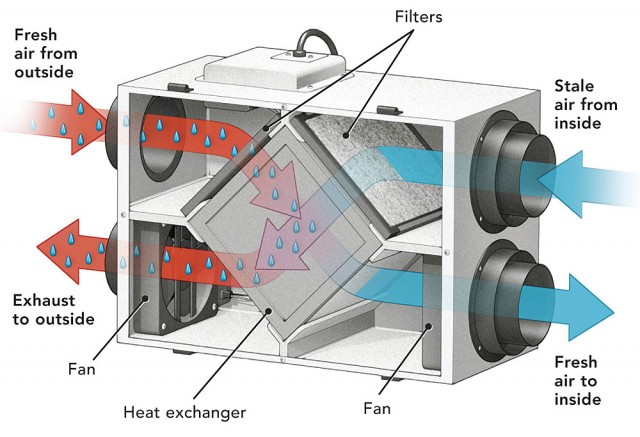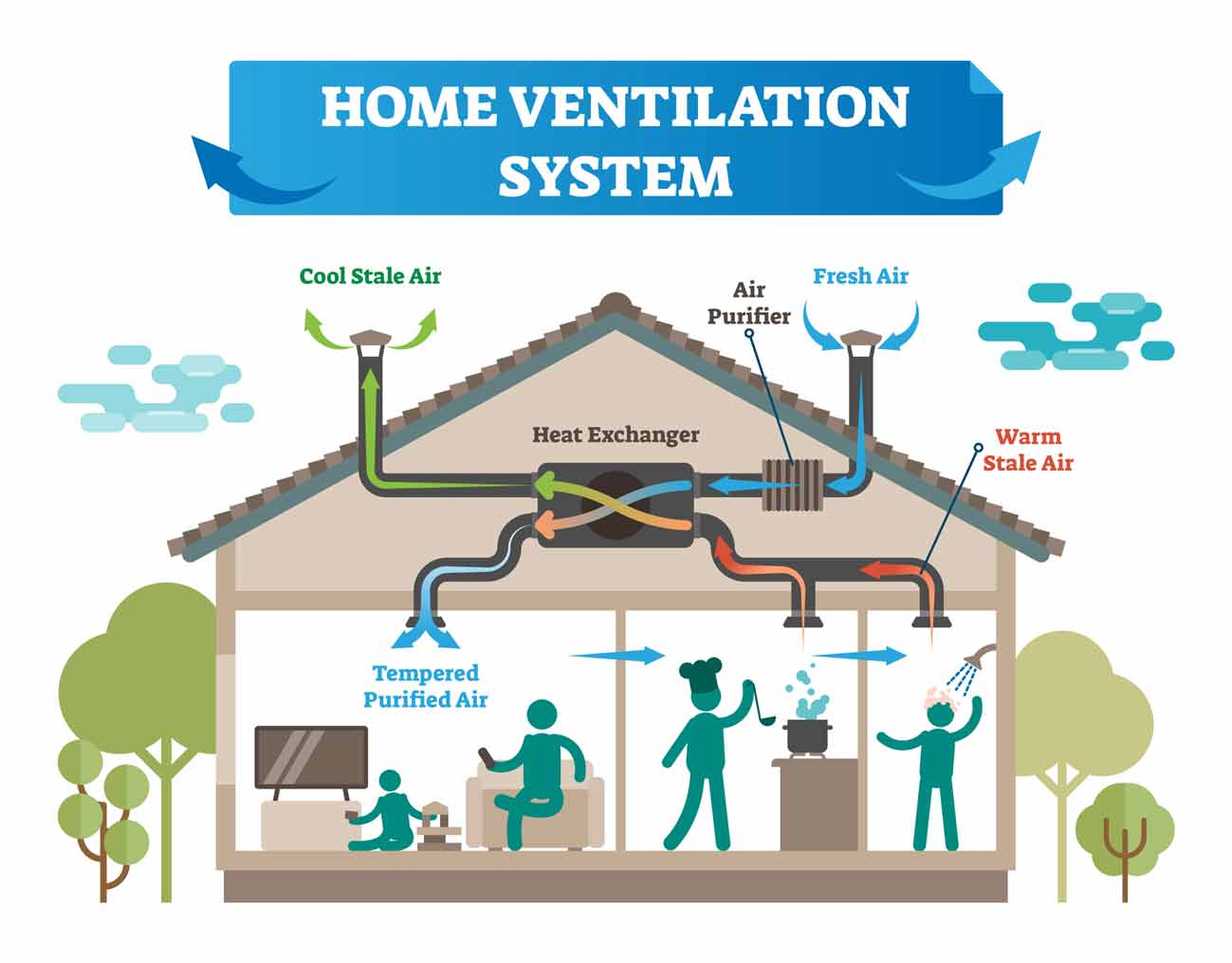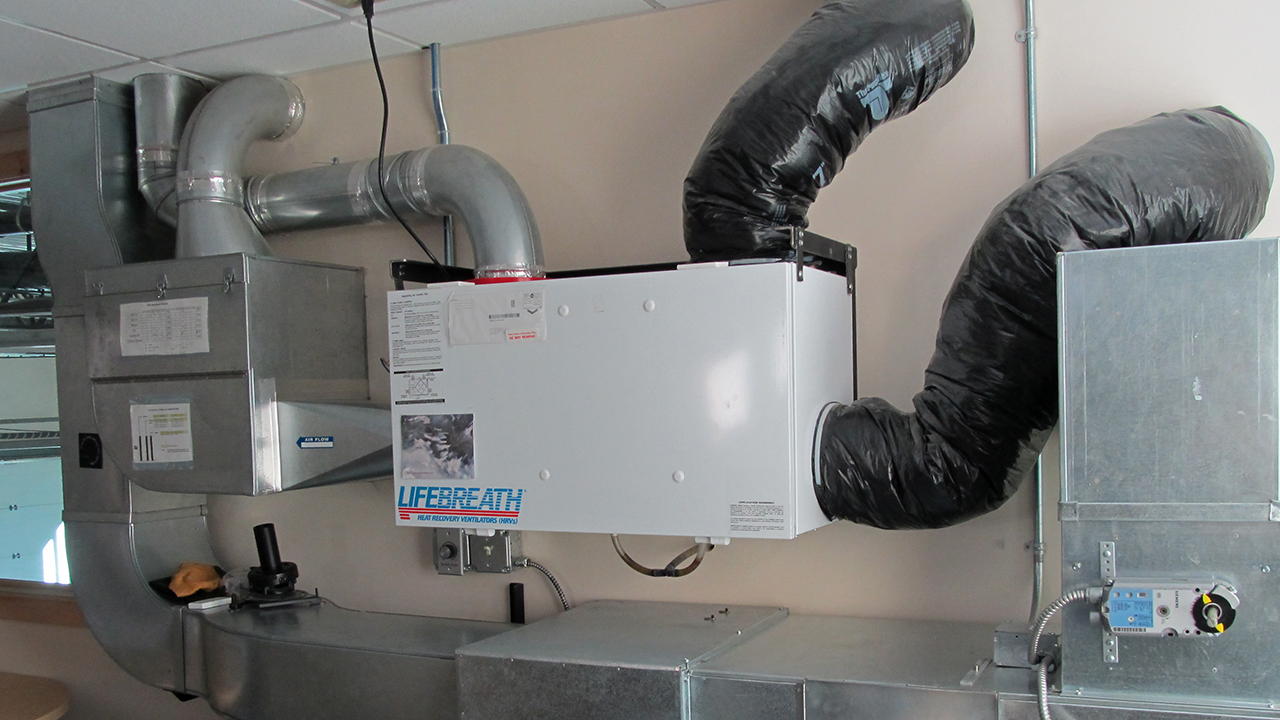HRV Explained: Everything You Should Know
The All-Inclusive Guide to the Uses of Heat Recovery Ventilation in Modern Structures
Heat Recovery Ventilation (HRV) systems stand for a significant development in developing modern technology (HRV Heat Recovery Ventilation). They offer a method for trading stale indoor air with fresh outdoor air while minimizing power loss. This approach not just improves interior air quality but also contributes to energy performance in both domestic and business structures. Comprehending the various applications and benefits of HRV can disclose its critical duty in modern-day layout and sustainability efforts. The implications of this modern technology are worth exploring even more
Recognizing Heat Recovery Ventilation Solutions

Numerous modern structures focus on energy performance, comprehending warm healing air flow (HRV) systems is essential for enhancing indoor air quality and decreasing energy usage. HRV systems function by transferring warm from stagnant interior air to inbound fresh air, effectively preserving comfy indoor temperature levels while minimizing power loss. These systems are composed of a heat exchanger, followers, and ductwork that assist in the blood circulation of air. During wintertime, HRV units capture and reuse warmth from the outward bound air, while in summer season, they can assist cool incoming air. By continually exchanging air, HRV systems likewise decrease humidity and the concentration of indoor toxins. Proper installation and upkeep of HRV systems are essential for their effectiveness and effectiveness in enhancing total building efficiency and convenience.
Advantages of Heat Recovery Ventilation
Heat recovery ventilation systems offer various benefits that improve both energy efficiency and indoor air high quality in contemporary structures. By recording and reusing power from exhaust air, these systems greatly minimize heating & cooling expenses, leading to lower energy usage. In addition, they maintain a consistent circulation of fresh exterior air, decreasing the threat of indoor air pollutants and allergens. This continuous exchange assists regulate moisture degrees, protecting against mold growth and ensuring a much healthier living environment. In addition, HRV systems add to sustainability objectives by reducing total carbon footprints. Their capacity to maximize ventilation without giving up thermal comfort makes them a valuable enhancement to modern structure design, advertising both financial and environmental advantages.
Applications of HRV in Residential Buildings
As homeowners increasingly focus on power efficiency and interior air quality, the applications of heat recovery ventilation (HRV) systems in residential buildings have ended up being extra prevalent. HRV systems are particularly helpful in snugly sealed homes, where maintaining fresh air flow is important for avoiding wetness accumulation and indoor pollutants. They properly move heat from outbound stale air to incoming fresh air, lowering energy expenses connected with cooling and heating. In addition, HRVs can enhance convenience levels by managing moisture and temperature level. They are likewise adaptable for different residential layouts, including single-family homes and multi-unit buildings. Generally, integrating HRV systems sustains lasting living practices while making certain a much healthier interior environment for owners.
HRV in Commercial and Commercial Setups
In industrial and industrial setups, the execution of warmth recovery air flow (HRV) systems has actually come to be significantly critical for optimizing energy effectiveness and keeping air high quality. These systems efficiently transfer heat from exhaust air to incoming fresh air, decreasing the requirement for added home heating or air conditioning. This hop over to here not just decreases energy expenses however likewise adds to sustainability campaigns. Industries such as production, warehousing, and office complex profit considerably from HRV systems, as they assist manage temperature level and moisture levels, making certain a comfy and productive atmosphere. Additionally, HRV systems help in eliminating impurities and excess dampness, boosting indoor air quality. As guidelines around air high quality become stricter, the adoption of HRV technology is most likely to expand, making it an essential component of contemporary industrial and commercial facilities.
Future Fads in Heat Recovery Ventilation Technology

Often Asked Concerns
How Does Heat Recovery Ventilation Effect Indoor Air High Quality?
Heat recovery ventilation greatly boosts interior air top quality by continually trading stagnant indoor air with fresh outside air while recovering energy. This process reduces pollutants, maintains ideal moisture degrees, and assures a much healthier setting for residents.
Can HRV Equipments Be Set Up in Existing Buildings?
HRV systems can indeed be set up in existing structures. Retrofitting may call for modifications to ductwork and ventilation layouts, but it considerably boosts energy performance and indoor air quality, making it a feasible choice for older structures.
What Upkeep Is Required for HRV Solutions?

Are There Particular Climates Where HRV Is More Efficient?
Heat recovery ventilation systems are particularly reliable in environments with considerable temperature distinctions in between seasons. These systems optimize energy effectiveness by recouping heat from exhaust air, making them excellent for both chilly and reasonably warm atmospheres.
Exactly How Do HRV Systems Affect Power Bills?
